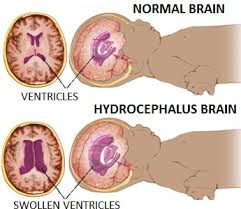COPD - 10 Nanda Nursing Diagnosis
Nursing Care Plan for Chronic Obstructive Pulmonary Disease
Chronic Obstructive Pulmonary Disease (COPD) makes it hard for you to breathe. Coughing up mucus is often the first sign of COPD. Chronic bronchitis and emphysema are common COPDs.
Chronic obstructive pulmonary disease (COPD), also known as chronic obstructive lung disease (COLD), chronic obstructive airway disease (COAD), chronic airflow limitation (CAL) and chronic obstructive respiratory disease (CORD), is the occurrence of chronic bronchitis or emphysema, a pair of commonly co-existing diseases of the lungs in which the airways become narrowed. This leads to a limitation of the flow of air to and from the lungs, causing shortness of breath (dyspnea). In clinical practice, COPD is defined by its characteristically low airflow on lung function tests. In contrast to asthma, this limitation is poorly reversible and usually gets progressively worse over time. In England, an estimated 842,100 of 50 million people have a diagnosis of COPD.
Symptoms
- Cough, with or without mucus
- Fatigue
- Many respiratory infections
- Shortness of breath (dyspnea) that gets worse with mild activity
- Trouble catching one's breath
- Wheezing
Because the symptoms of COPD develop slowly, some people may not know that they are sick.
Causes of COPD
1. Smoking
Smoking is the main cause of COPD. At least four out of five people who develop the disease are, or have been, smokers. The lining of the airways becomes inflamed and permanently damaged by smoking. This damage cannot be reversed. Around 10-25% of smokers develop COPD.
2. Passive smoking
Exposure to other people’s smoke increases the risk of COPD.
3. Fumes and dust
Exposure to certain types of dust and chemicals at work, including grains, isocyanates, cadmium and coal, has been linked to the development of COPD, even in people who do not smoke.
The risk of COPD is even higher if you breathe in dust or fumes in the workplace and you smoke.
4. Air pollution
According to some research, air pollution may be an additional risk factor for COPD. However, at the moment it is not conclusive and research is continuing.
Nanda Nursing Diagnosis for COPD
1. Ineffective airway clearance
2. Ineffective breathing pattern
3. Impaired gas exchange
4. Activity intolerance
5. Imbalanced Nutrition: less than body requirements
6. Disturbed sleep pattern
7. Bathing / Hygiene Self-care deficit
8. Anxiety
9. Ineffective individual coping
10. Knowledge Deficit


Komentar
Posting Komentar